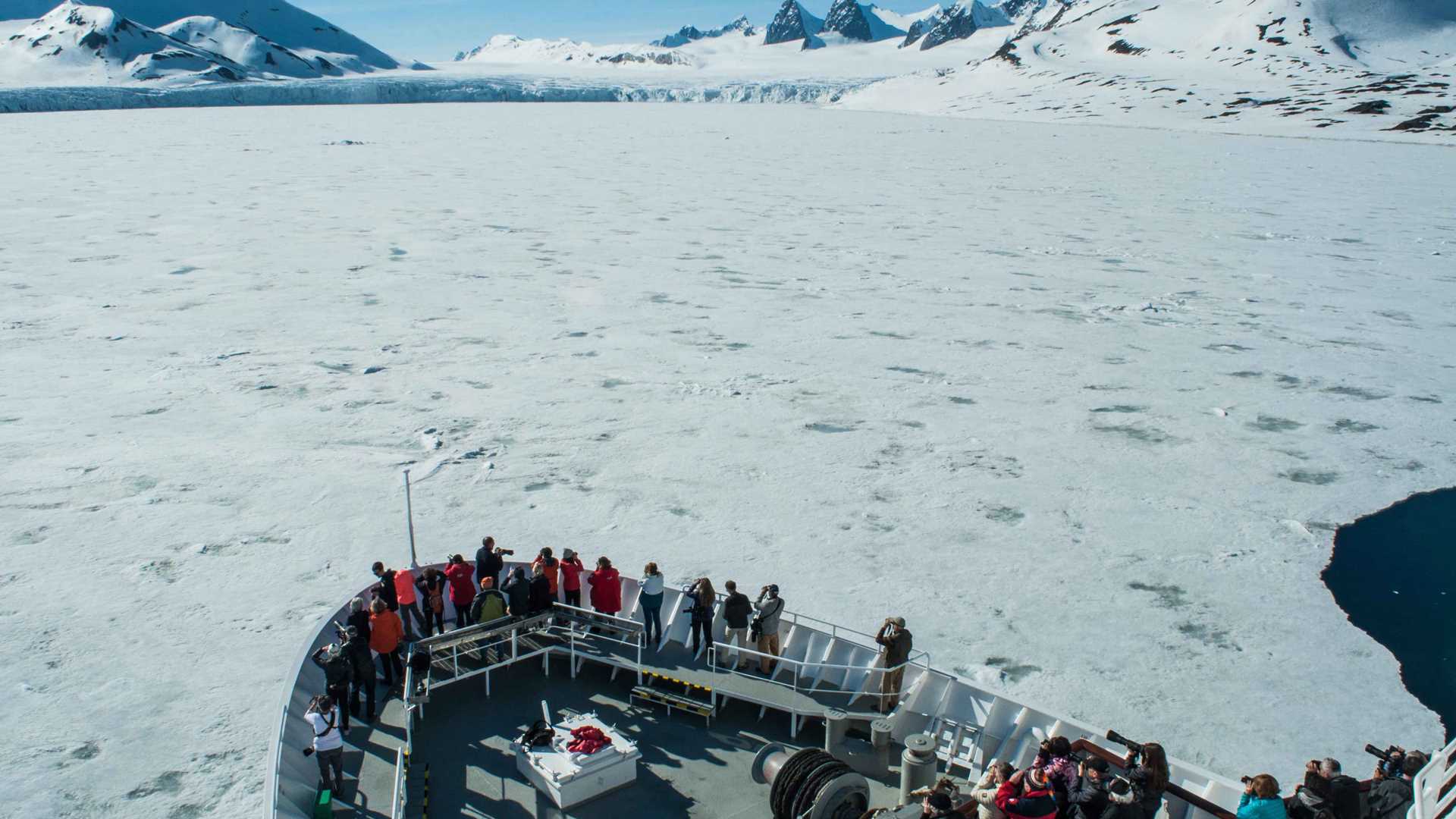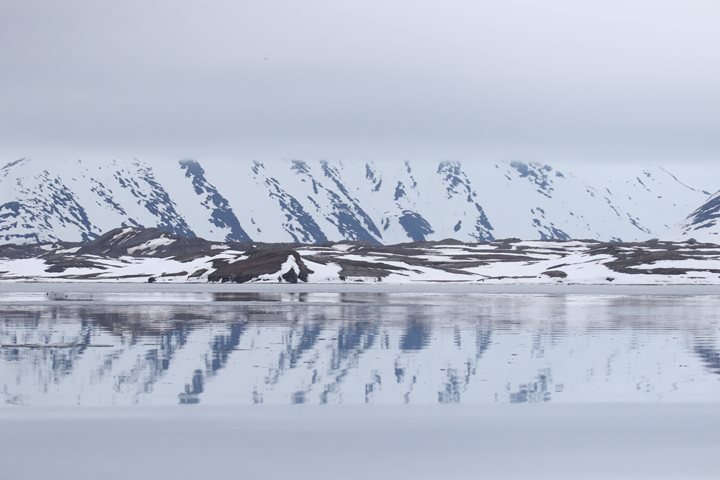We spent the first night of our Svalbard adventure quietly sailing south for Hornsund, the southernmost fjord system on the main island of Spitsbergen. Night is more of a manner of speaking up here – we will never see the sun set on this expedition as we are far north of the Arctic Circle. The sun shines brightly and the seas are glassy calm.
A good while before breakfast we sailed into the fjord system searching for wildlife, especially the large furry types (polar bears!) that live on the ice. We crossed paths with a fishing vessel with 1000’s of kittiwakes and northern fulmars in her wake. Samarinvågen was our first destination today, which is a fjord facing south. On our way we encountered fast ice with seals dotted about, but no polar bears.
We then headed for Brepollen which is at the end of the fjord system. Soon we heard the announcement that a polar bear has been spotted off in the distance. It was a female with two cubs. The ship gently nudged into the edge of the fast ice and over the next couple of hours we got distant, but good, views of these remarkable marine mammals. At one point she headed in the direction of a seal on the ice but she was spotted and the seal made a getaway. She then spent some time nursing her cubs before heading off on another hunt, which also proved unsuccessful. Bears are only successful between six and ten percent of their hunts.
On our way out of the fjord we encountered a large pod of beluga whales who were working along the edge of the sea ice and coastline. They did not spend much time at the surface but the ideal conditions made spotting the cetaceans a relatively easy business. Close to the entrance of Brepollen we spotted another (male) bear. As we approached, we noticed that he was crouched low over a breathing hole, patiently waiting for a seal to make an appearance. He had given up by the time we drew close, slipping into the water for a swim. Bears are excellent swimmers and can travel great distances this way.
This morning we also met with the expedition staff and listened to presentations about the Zodiac boats and the trip. We also took part in a decontamination exercise to minimize the introduction of invasive species to the resilient, but fragile, environment.
During lunch we anchored off Gnålodden for our afternoon activities, which included walks across different landscapes – some with elevation gain and some that are flat. During our walks we marvelled at the dramatic landscapes and were taken aback by the noise coming from the impressive cliffs, which were laden with kittiwakes and Brünnich’s guillemots setting up for the short breeding season. Some of us were fortunate to catch glimpses of Atlantic puffins.
We also came across the remains of a hut and a gravesite, which gave us the chance to learn about the early Pomor hunters. Our walk ended at a new hut, which was run by a remarkable Norwegian woman. She has spent eight seasons in the hunt and has brought up her two young children there.
One of the most exciting parts of our walk was the discovery of lots of purple saxifrage. They were in full bloom and dotted all about our landing site. The purple saxifrage is the northernmost flowering plant on the planet and can be found all the way above 82ᵒ, even though we are only at a mere 77ᵒ.
After the captain’s Welcome Cocktails and dinner we gladly collapse into our beds to get some well-earned shuteye during the rest of the day – after all there will be no darkness tonight!







